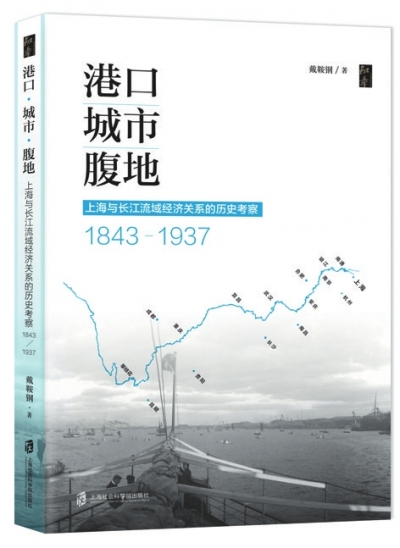How did Shanghai evolve into a leader in the Yangtze River Delta?

Study on the Economic Relationship between Shanghai and the Yangtze River Basin (1843–1937)
Before the opening of the Port of Shanghai in 1843, Shanghai, although already a well-known port, was far less influential in the Yangtze River Delta than Suzhou and Hangzhou. In Study on the Economic Relationship between Shanghai and the Yangtze River Basin (1843–1937), Dai An’gang, a professor from the Department of History at Fudan University, explores how Shanghai since the opening of its port has risen by virtue of its geographical advantages and special historical environment, especially its port, becoming the leading city in the Yangtze River basin and the largest port city in China.
The author argues that the rise of Shanghai was closely related to the Port of Shanghai. In 1842, the Qing court (1644–1911) declared the lifting of the trade ban on Guangzhou and the opening of four additional ports including Shanghai, Ningbo, Fuzhou and Xiamen. Shanghai’s long-suppressed geographical advantages were then released, and thus it quickly replaced Guangzhou as the primary port for China’s foreign trade. The author compares Shanghai and Ningbo and Fuzhou in the same period, especially Guangzhou, which had been occupying a dominant position before. Statistics show the great changes and outstanding performance of Shanghai in trade volume of important commodities and in total trade value.
The connection of the shipping routes of the Yangtze River made the Port of Shanghai evolve into a port of the Yangtze River basin. Shanghai then continued to expand its inland water transport network and built itself into the largest inland water transport center, thus consolidating its economic ties with the Yangtze River Delta. After the comprehensive upgrade of the Port of Shanghai, its status as an internal and external trade port was increasingly prominent.
In the book, the author describes how the Port of Shanghai, as China’s primary internal and external trade hub port, drove the remarkable development of Shanghai’s commerce, financial industry, communication industry, industrial economy and urban areas, making it the most economically developed city and the most populous city in China. As such, the author argues that the continued development of its port was the source of Shanghai’s rise in East Asia in modern times.
The rise of Shanghai broke the Suzhou-centered urban pattern of the Yangtze River Delta, accelerating the transfer of the regional economic center from Suzhou to Shanghai. It also contributed to the formation of the commodity circulation structure, a structure dominated by the exchange of foreign industrial products and Chinese agricultural and sideline products. This transformed the original internal-oriented urban pattern of the Yangtze River Delta to an export-oriented pattern.
This article was edited and translated from China Reading Weekly.
edited by YANG LANLAN
